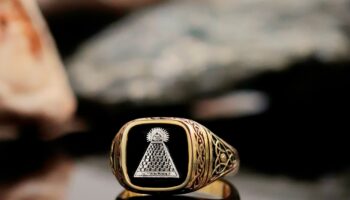Pawnshops are the oldest forms of business dating back almost 3 millennia. The trade of pawnbroking has evolved with time to suit the different needs societies have. While some things might have changed over the years, the fundamentals have largely stayed the same. Here is a short history:
Pawnshops are run by individuals referred to as pawnbrokers. Pawnbrokers accept valuables pledged by customers as collateral for a short-term loan. Pawnbrokers will assess valuable items ranging from power tools to gold jewellery to determine how valuable they are. The pawnbroker will then based on the valuation offer a loan of a specific amount.
Pawnshops have become so ubiquitous in most communities but a lot of people don’t know that the origins of the business dates way back to ancient times.
Where did it all start?
There has been evidence of pawnbrokers in ancient times from ancient China, France, Italy, Greece, and ancient Roman civilization. Not only are pawnbroking ancient trades but it is one that was practiced widely in virtually every continent. There was a point during the 12th and 20th centuries that there were as many pawnshops in the UK as there were pubs.
Pawnbrokers were always regulated in some way or another.
Many ancient civilizations that had pawnbroking set up specific rules for pawnbrokers. Even the Jewish Torah has rules set out for pawnbroking. The trade appeared in early religions like Judaism and was adopted later on by Christian figures like Pope Leo X who became known for pawning a lot of his palace silver and furniture to pay for the things the church couldn’t provide him with.
The earliest pawnshops have been recorded in China in the 5th century. Back then Buddhist monasteries established and operated pawnshops to help the poor communities. Sometimes the pawnshops were used by wealthy people who would pawn things leaving them in these Buddhist pawnshops to avoid paying certain property taxes.
The pawnbroking trade then spread into the rest of the world. In England, even the monarchy pawned its valuables to finance certain projects. King Edward III pawned the crown jewels in 1338 to raise money for the war against France. King Henry V did the same in 1415.
Pawnbroking also played a role in voyages that led to the discoveries made by the famed Christopher Columbus. It is said, the Spanish Queen Isabella pawned her jewellery to fund the voyage of the three ships Niña, Santa Maria, and Pinta that went on to discover the Americas.
Pawn Shops around the Globe
A lot has changed since the 5th Century when pawnshops were owned by Buddhist monasteries. The business has always been about fair trade and easy access for people who need it the most. The Catholic church for instance mandated that interest rates charges for the poor be reasonable. In England, pawnshops, or Lombards as they were known, were funded by the state and forbidden from charging interest. That, however, proven to be unsustainable and different ideas were tried until the government settled on allowing shops to charge a 1.6% interest rate per month.
The business of pawnbroking has grown and spread throughout the world. Each country has its own rules and interest rates. For instance, pawnshops in American charge an average of 4% interest per month on a 4-month pawn contract. In Russia, Pawnbrokers are only allowed to buy and sell precious metals and precious gems.
Pawnshops have been around for a while in Australia. They are regulated by the state laws and operate under licences that coversthem as money lenders as well as purveyors of second-hand goods. Customers need to be 18 years or older to pawn or sell anything at a pawnshop. For many, pawnshops provide a financial lifeline that a lot of other institutions cannot provide and it is for this reason that this trade will prevail for more generations.







